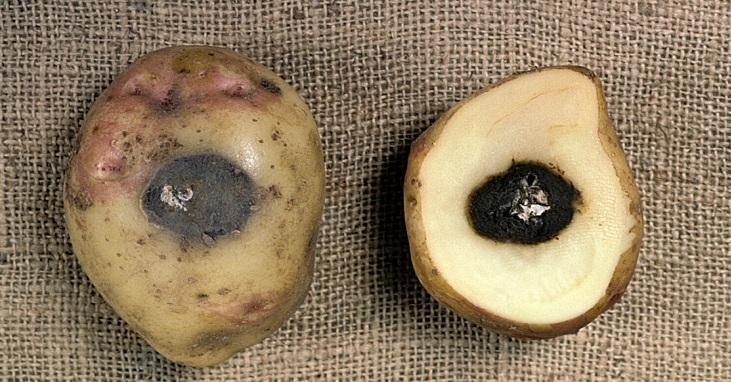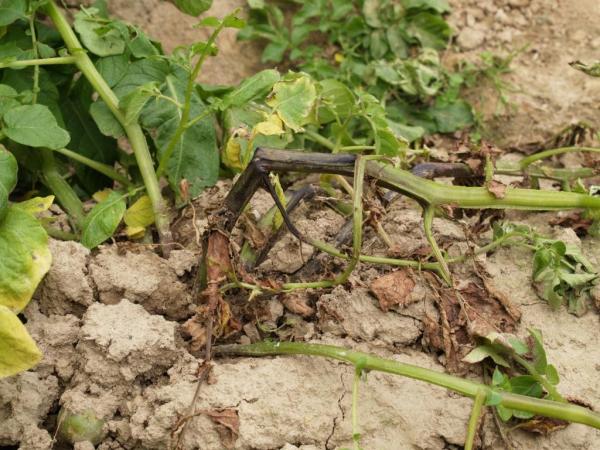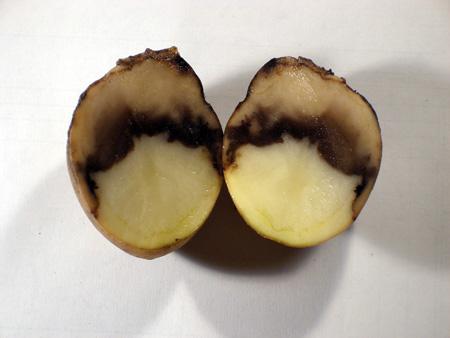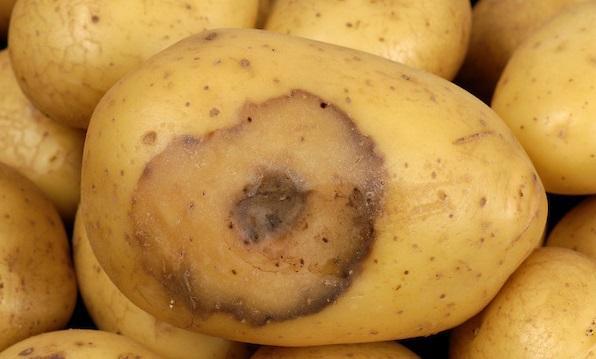Potato blackleg disease (Pectobacterium atrosepticum) – identify and control

Potato blackleg disease can occur both in the field and during storage, with tuber losses reaching 50-60%.
Symptom. Plants from infected tubers remain smaller, with weak stems, erect branches, and bent towards the main axis. Leaflets are twisted towards the lower face, are stiff, yellowish-green with a metallic sheen.
The base of the stems is thin, blackened, and the tissues in this area show a soft rot. The inside of the stem base is brown and soft. The vascular bundles are darker in color. Diseased plants pull off easily, do not produce tubers or the tubers are affected by wet rot.



In sectioning through an attacked tuber, a pinkish-purple discoloration of the vase ring is observed, located a few millimeters below the peel. In a more advanced stage of the disease, starch solubilization begins, forming caverns in the tubers filled with a bacterial mucilage that gives off an unpleasant butyric acid smell. Eventually, the flesh of the tuber breaks down completely.
In damp, unventilated, moderate temperature storage, the disease progresses rapidly causing mass rotting of tubers.
The bacterium is transmitted from one year to the next most often through infected tubers used for planting and through plant debris left in the field after harvesting.
Potato blackleg disease spreads during vegetation by insects, snails, water from rain or irrigation, tools, etc. Infection is made through wounds, lenticels, or stolons.
Prophylaxis. As prophylactic measures, it is recommended to avoid planting in heavy, wet soils, to respect crop rotation, so that on infected land, potatoes, or other plants for which the pathogen shows affinity, do not return earlier than 4 years.
When planting, only healthy tubers should be used, resistant varieties should be cultivated, soil pests should be controlled, potatoes intended for storage should be harvested at full maturity, and plant remains left on the field after harvesting should be collected and burned.
Before storage, the tubers will be sorted, and the temperature in the storehouses will be maintained at 1-4º C and humidity at 70-80%, ensuring good ventilation.















































































































































































































































































































































































































































